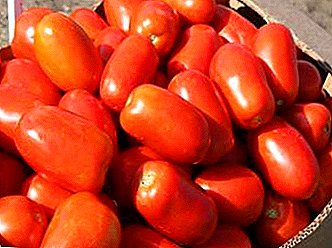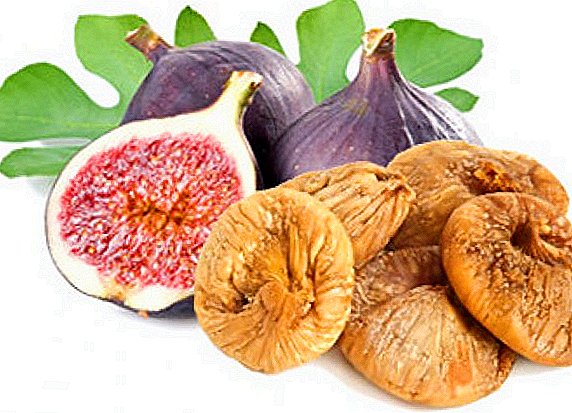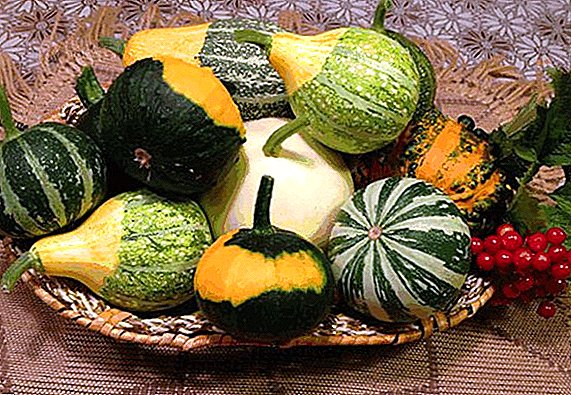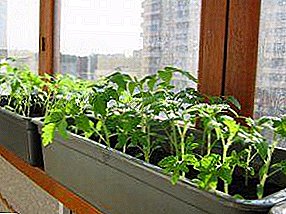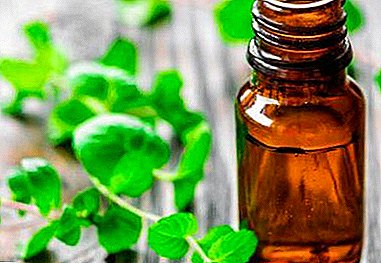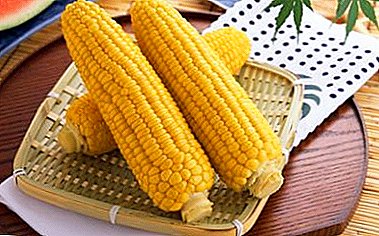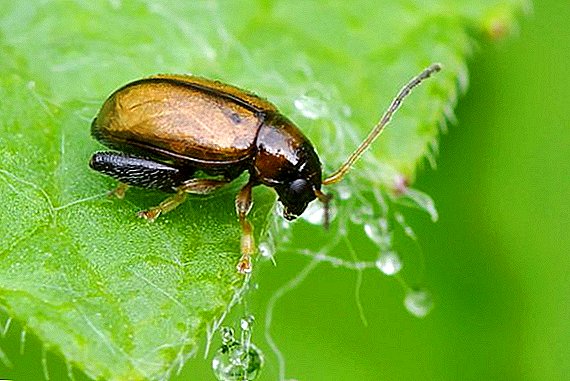 One of the most dangerous pests of radish called cruciferous flea. They live everywhere, so every gardener can meet them.
One of the most dangerous pests of radish called cruciferous flea. They live everywhere, so every gardener can meet them.
Let's see what these pests can do with radish and what are the ways to combat them.
Pest description
Cruciferous flea has a very small size - no more than 3 mm. Often, gardeners do not pay attention to them, because the bugs are so small that they merge with the ground. The black color helps them to remain invisible, but some types of flea have yellow stripes on their backs.  Bugs wake up after winter as soon as the earth thaws. Adults in the spring eat mostly weeds (wild radish, field yarut, rape and others), and then black fleas switch to radish and other cruciferous plants.
Bugs wake up after winter as soon as the earth thaws. Adults in the spring eat mostly weeds (wild radish, field yarut, rape and others), and then black fleas switch to radish and other cruciferous plants.
Did you know? The name fleas received from the family of plants that they love to eat - crucifers.Insect larvae eat mainly the roots and roots of cultivated plants. After being transformed from a larva into a full-bodied flea, the insect comes to the surface and damage the leaves and growth points.
Possible consequences
For flea radishes, they are very dangerous - they eat away thin and delicate leaves to holes, after which they dry out. A large number of flea beetles can destroy the entire radish in the garden in 2-3 days: adult bugs will eat leaves and eat the skin on the stalks, while the larvae will destroy the roots of the plant.  It is necessary to fight the cruciferous flea on the radish immediately after you notice it, and even better to carry out prevention during planting.
It is necessary to fight the cruciferous flea on the radish immediately after you notice it, and even better to carry out prevention during planting.
Did you know? The biggest radish was grown by Israeli farmer Nissan Tamir. She weighed 10 kg and is listed in the Guinness Book of Records.
Signs of cruciferous flea on radish
The main signs of infection of the radish by the cruciferous flea are:
- the presence on the plant of small bugs that jump in all directions, if you disturb the leaf;
- leaves of the plant are thin and skeletal;
- the presence of holes in the leaves;
- leaf mining (leaf gnawed inside the leaves).

Methods of struggle
With these insects are struggling with both chemical and folk remedies. If the owner of the site is rarely in the country, then it will be more convenient for him to use chemical means to combat fleas.
But gardeners who are constantly on the site, can defeat the bugs and folk remedies.
It will be useful for you to learn about the problems when growing radish, about the fight against diseases and pests and about the beneficial properties.
Folk remedies
Get rid of the fleas on the radish, you can with the help of tools such as regular vinegar. In a bucket of water you need to dilute a bottle of vinegar and process the affected culture in dry weather. Good help in the fight against pest tincture of 500 g of the roots and leaves of dandelion and a bucket of water.
Important! Radish - early ripening culture. If not necessary, do not use chemicals, as they can accumulate in the plant.Also suitable for spraying decoction of tomato or potato tops, which can be obtained by staving bushes. In this broth you need to add another half a piece of rubbed soap.
 A large amount (2-4 kg) of fresh or dried tomato or potato tops must be soaked for four hours in 10 liters of water, then boiled, cooled and filtered. Then dilute the broth with water 1: 1.
A large amount (2-4 kg) of fresh or dried tomato or potato tops must be soaked for four hours in 10 liters of water, then boiled, cooled and filtered. Then dilute the broth with water 1: 1.If there is an extra ready decoction, you can not pour it out, but keep it until next season, having tightly closed the lid.
Well helps the powder soil, which grows radishes, wood ash, mothballs or tobacco dust. This powder will be a good protection against flea and a useful fertilizer at the same time. The procedure will be effective if it is done every 4-5 days at least three times.
Flap on a radish can be overcome with several other folk remedies. The tops of the plant can be sprinkled in the early morning on dropped out dew with black ground pepper or slaked lime. Experienced gardeners come up with various insect traps.  Often there are special sheds over the beds, the underside of which are smeared with something sticky (tar, grease, tar). A few days later, the flea will stick to the trap and it will need to be changed to a new one.
Often there are special sheds over the beds, the underside of which are smeared with something sticky (tar, grease, tar). A few days later, the flea will stick to the trap and it will need to be changed to a new one.
Important! During pollination of radish with mothballs, protective masks should be used, since its vapors are dangerous to human health.Motorists to fight insects can use pieces of cloth dipped in old motor oil. Pieces of cloth laid out on cardboard sheets between the beds of radish for 2-3 days. After they need to turn to the other side and leave for the same period. Traps laid out at a distance of 4 meters from each other.
Chemicals
Before splashing radish with insecticide from a flea, it is worth trying to fight it with natural means. If they did not help, you can proceed to the use of special drugs. 
The most effective insect control chemicals are:
- Actellic;
- "Decis";
- "Intavir";
- Aktara;
- Bankol;
- "Karate";
- "Sherpa";
- Tabazol;
- Kaiser;
- Zolon.
Important! Insecticides are used only on a radish of medium varieties (they mature for 25 days) and only while the seedlings are young. Otherwise, there is a high probability of the loss of crops.It is important to consider the desired concentration of drugs, which is always written on the packaging and for all substances is different. For example, 20 ml of Actellic should be diluted with 10 liters of water. And if you use "Karate", it will be enough and 2.5 ml for the same amount of water.
 Before treating all shoots, it is necessary to check the drug on a single plant. Then you need to watch the processed radish day and, if its condition has not worsened, you can continue to process the culture. Sprayed with chemicals usually in the evening, when the sun had already gone down.
Before treating all shoots, it is necessary to check the drug on a single plant. Then you need to watch the processed radish day and, if its condition has not worsened, you can continue to process the culture. Sprayed with chemicals usually in the evening, when the sun had already gone down.It will also be useful for you to learn about such plant pests as thrips, scoop, spider mite, whitefly, aphid, mealybug, moths, false guard.It is at this time of day that the cruciferous flea in a state of calm sits on the leaves of a radish. It is advisable to see the weather forecast for the night and the next day to make sure that there will be dry weather. If the precipitation is still gone, you need to repeat the processing.
It is important to remember to observe all safety rules during the treatment of plants with chemicals, in order not to accidentally poison yourself and not to get chemical burns. It is possible to collect and eat radishes, which have been processed, only after a month from the day of spraying. 
Pest prevention
The appearance of cruciferous flea on a radish is easier to prevent than to try to fight it with all your might. Cruciferous flea are afraid of a wide variety of smells. For the prevention of the appearance of an insect, radishes should be surrounded by such plants:
- tansy;
- coriander;
- caraway;
- celandine;
- nasturtium;
- dill;
- tomato;
- potatoes;
- garlic.
Did you know? Radish contains a lot of ascorbic acid. Having eaten 250 grams of radishes, you can give the body a daily rate of vitamin C.Fleas do not like wet places, so that radishes should be placed on them. In autumn, all the soil in the garden needs to be dug up. So the fleas that have burrowed into the ground for the winter, will be on the surface and die during the frost.
 It is important to feed the radish, regularly water and loosen the land in which it grows. So its development will go much faster, the leaves will become more rough, and the flea will not have time to cause radish significant harm.
It is important to feed the radish, regularly water and loosen the land in which it grows. So its development will go much faster, the leaves will become more rough, and the flea will not have time to cause radish significant harm.You can try to cover radishes with a spanbond or lutrasil, which easily let air, light and water through, and also protect the young plant from insect attacks.
Cruciferous flea - a very dangerous insect for young radish. But by learning to prevent their occurrence and fight them, you can avoid the death of the plant.


